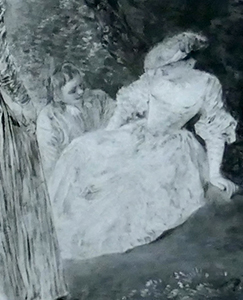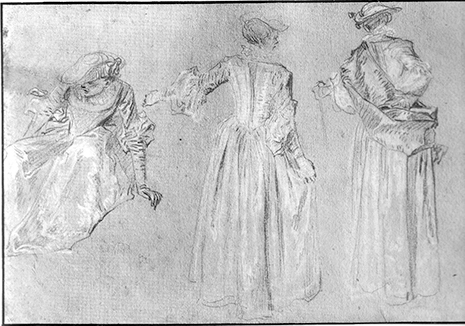
- Home Page
- Accepted
Paintings & Copies - Doubtful
Attributions - Doubtful Textual References
- Alternative
Titles - Collectors &
Museums - Bibliography
- Search Abecedario
- Watteau &
His Circle
X. Fete galante
Entered May 2020
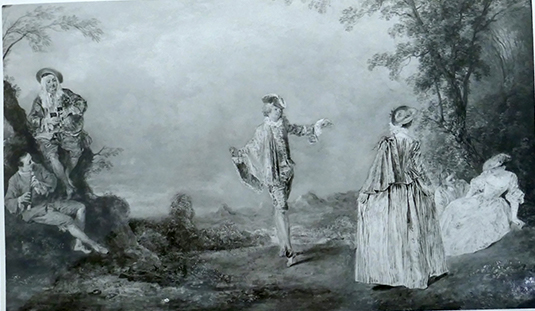
Whereabouts unknown
Medium unknown
Measurements unknown
PROVENANCE
Geneva, with an art dealer.
REMARKS
This painting is known to me only by a photograph in the archives of the Getty Research Institute. In that the photograph was made in 1968 by Claude Mercier, a Geneva-based photographer, it seems fair to assume that the painting was then in that city or its environs.
The picture was evidently attributed to Watteau in the past, and for good reason: the individual characters are very much like Watteau’s. In fact, each of them has a counterpart in Watteau’s paintings and drawings.
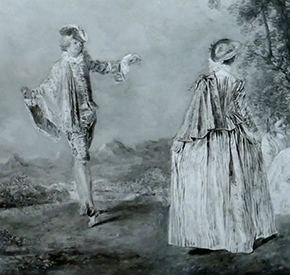
Anonymous artist, Fête galante (detail).

Watteau, L’Indifférent, oil on panel. Paris, Musée du Louvre.
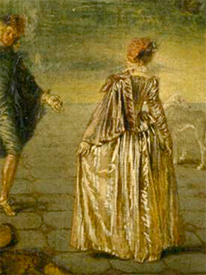
Watteau, Les Plaisirs du bal (detail), oil on canvas. Dulwich, Dulwich Art Gallery.
The man and woman dancing at the center of the picture are derived from two different Watteau paintings. The man is a copy of Watteau’s well-known L’Indifférent in the Louvre. His female partner is based on the dancer at the center of Watteau’s equally well-known Les Plaisirs du bal at Dulwich. In both instances the figures in the Geneva picture are in the same direction as Watteau’s.
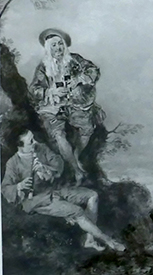
Anonymous artist, Fête galante (detail).
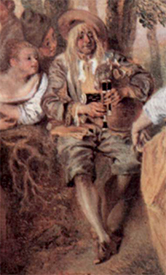
Watteau, Les Bergers (detail), oil on canvas. Berlin, Schloss Charlottenburg.
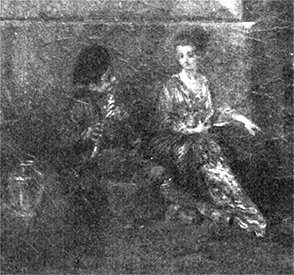
Watteau, Le Flûtiste (detail), oil on canvas. Grenoble, Musée des beaux-arts.
Both musicians in this picture are also based directly on figures in Watteau’s paintings. The bagpipe player sitting on a knoll, actually the actor La Thorillière with his long blond hair, is based on the shepherd in Watteau’s Les Bergers in Berlin. The flutist was derived from the figure in the foreground of Le Flûtiste, a painting that is a collaboration between Watteau and Francisque Millet. Here again, the figures are in the same direction as Watteau’s.
Curiously, the woman at the far right side of the painting was not taken from a Watteau painting, but, rather, from a drawing now in Brussels (Rosenberg Prat 225).
At first glance, this painting might have been mistaken as being by a minor follower of Watteau, an artist with an aesthetic of charming, small figures in a generous space. But, to the contrary, we should be suspicious and question when this pastiche was created. The choice of a relatively obscure painting like the Grenoble Le Flûtiste sets off a cautionary alarm, and this is reinforced by the pasticheur turning to a drawing for another of his figures. These seem like intentionally obscure sources, meant to elude the viewer.
